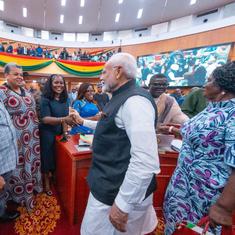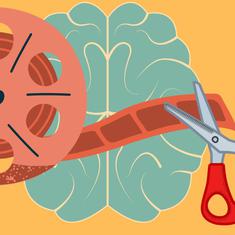A key part of Prime Minister Narendra Modi’s call for a self-imposed janata curfew or people’s curview on Sunday involves Indians taking to their balconies at 5 pm to clap, bang utensils or ring bells to express their gratitude to those providing essential services, particularly medical professionals, during the coronavirus crisis.
This is an attempt to emulate organic rounds of daily applause that have broken out in several European cities under lockdown with the same intention.
While many Indians have expressed appreciation for the prime minister’s effort to send thanks to medical professionals, those on the front lines of this challenge took to social media demanding much more than just applause.
@narendramodi I don't want your claps. I want your genuine and wholehearted effort in ensuring my wellbeing. I want personal protective equipment. I want better government strategies. I want to have faith in your actions. Do better.
— M (@unkittenish) March 21, 2020
protect yourself on your own. Basically no help was given, we are left on our own. I just feel if in a developed country like Italy where doctors are properly protected, they’re so getting infected, where does India stand ? Nobody’s showing care for us at this point & it doesn’t
— Dr. Aditi Rana (@itrollmuggles) March 21, 2020
Almost all of the lessons derived from other countries that have had to deal with a huge spurt in coronavirus cases, beginning with China way back in December to a number of European nations in February, has been the need to prepare the medical system to deal with the deluge of patients.
Covid-19, the disease caused by the virus, may have a mortality rate of 2%-3% – far higher than the ordinary flu. But that figure is itself contingent on the healthcare system being able to devote resources and attention to a large number of patients.
Today, we spent hours figuring out how to re-structure healthcare facility in our hospital. Which wards and how many beds do we assign for #COVIDー19 patients? How many ICU beds? 1/3 of hospital beds and half the ICU beds. Someone said. The numbers send a shudder down the spine.
— SP Kalantri (@spkalantri) March 21, 2020
Challenging indeed. 17 steps for donning personal protective equipment and 11 steps for safely doffing it. Nurses, technicians and doctors are unable to voice their struggle as they care for ICU patients. #Covid19 #coronavirusindia
— SP Kalantri (@spkalantri) March 21, 2020
Take the question of personal protective equipment or PPE as it is known. These are the full-body suits needed to ensure that medical professionals do not themselves end up contracting the virus as they seek to treat patients.
If they do get the virus, the blow is a double-whammy – the doctors, nurses and other staff would themselves have to either be treated or go into isolation, thereby putting an even bigger burden on an already overwhelmed health care system.
I can see a scramble for PPE since they are in such short supply in states like ours. We still have the advantage of being a few days behind on the upslope of this pandemic... Will we heed this advice from The Lancet? https://t.co/F4b4OVjWpm
— yogesh jain (@yogeshjain_CG) March 21, 2020
A shortage of PPE was, among the reasons that healthcare workers have in some cases been infected.
“Doctors are the first point of contact and we need the protective gear to stay safe,” Dr Harjit Singh Bhatti, the National President of the Progressive Medicos & Scientists Forum, told the Quint. “Just the other day a doctor in Lucknow tested positive, and he and his entire team have been quarantined.”
This is where the question of applause not being adequate comes in.
The Times of India reported that “healthcare personnel in India face a dire situation in dealing with the Covid-19 pandemic with a shortage of quality personal protective equipment looming as Indian manufacturers say they don’t know what to produce in the absence of health ministry specifications for them”.
The report goes on to quote a health ministry official passing the buck to the textile ministry, saying the responsibility to produce this material lies with them.
“We have written several times to the health ministry from February 12 onwards and met many of them too,” said Protection Wear Manufacturers Association of India chairman Dr Sanjiiiv on March 21. “You can imagine their sense of urgency when they still haven’t managed to come out with specifications, over a month later.”
Similar fears are being expressed by those aware of the nature of critical care in India. Treatment of those with Covid-19 heavily depends on access to Intensive Care Units, with ventilators.
In my hospital, 90% of the ventilators are occupied now, even when there are no confirmed COVID-19 case. Just imagine how the health system will cope up if the epidemic expands.
— Zeeshan Mhaskar (@MhaskarChief) March 20, 2020
According to a paper in the Critical Care Medicine journal, India has just 2.3 critical care beds per 1,00,000 people. Italy – where coronavirus cases have pushed its healthcare system to the brink leading to more deaths than China where the disease first emerged – has 12.5 ICU beds per 1,00,000 people.

While the government has approved a plan to ramp up production of ventilators in the country, an Economic Times report also pointed out that the ban on international flights as well as shutdowns in other parts of the world have meant that critical components to assembly more equipment may not reach India. In other countries, the governments have themselves placed orders for ventilators – Germany has ordered 10,000, while Italy is hoping to buy 5,000.
“The ventilator crisis will come up if and when India reaches the number as Italy’s,” Lifeline Biz MD Vineet Acharya told the Economic Times. “Let’s hope we don’t reach the Italy numbers, because then we are in big trouble.”
Also read
Investigation: Crucial coronavirus gear supply clouded by allegations of government ‘malintention’










